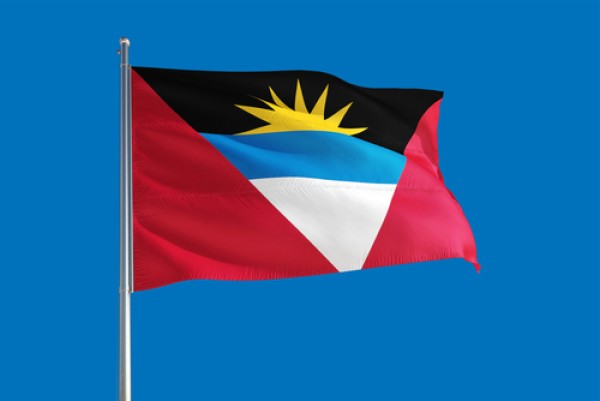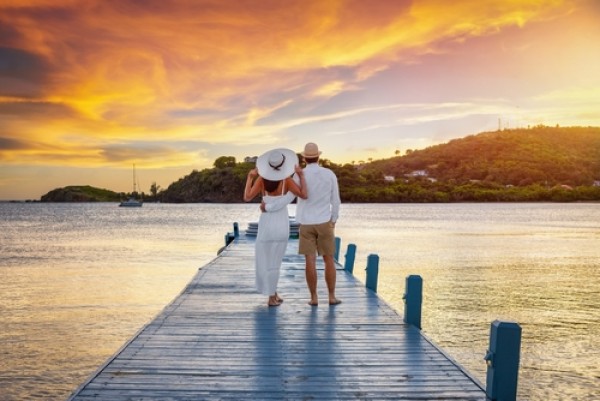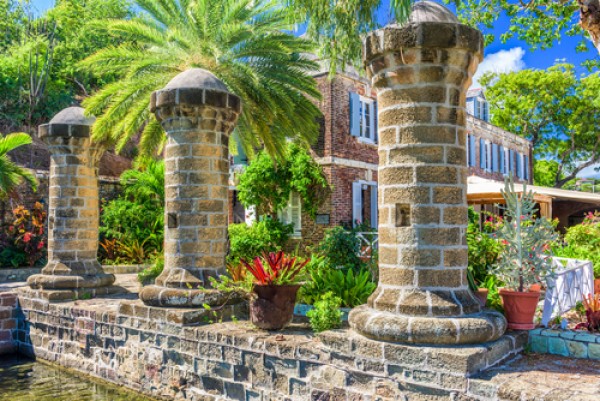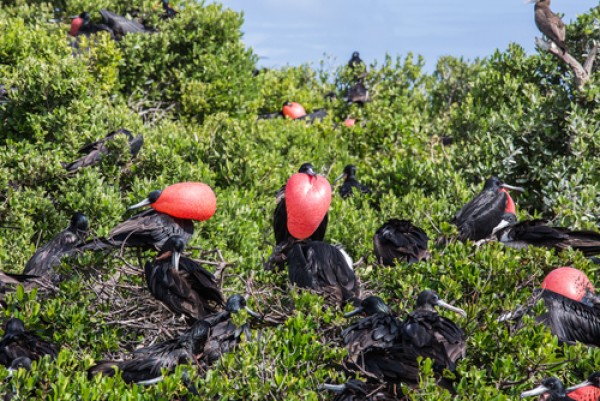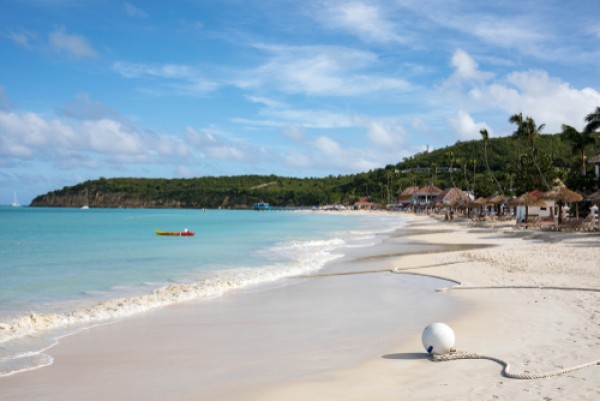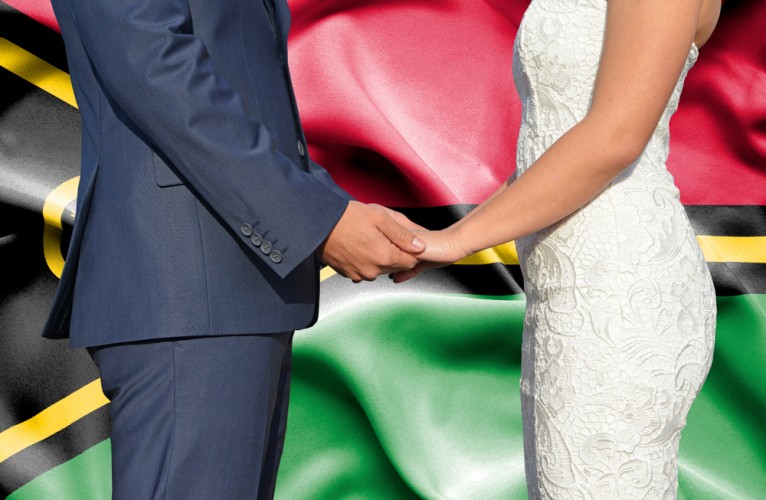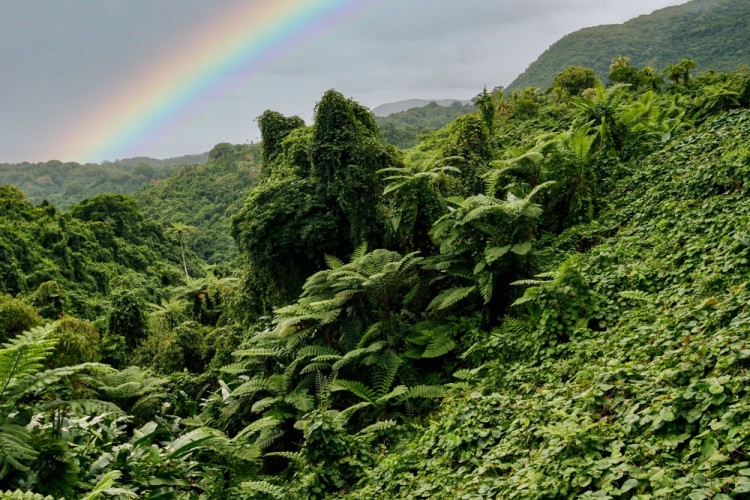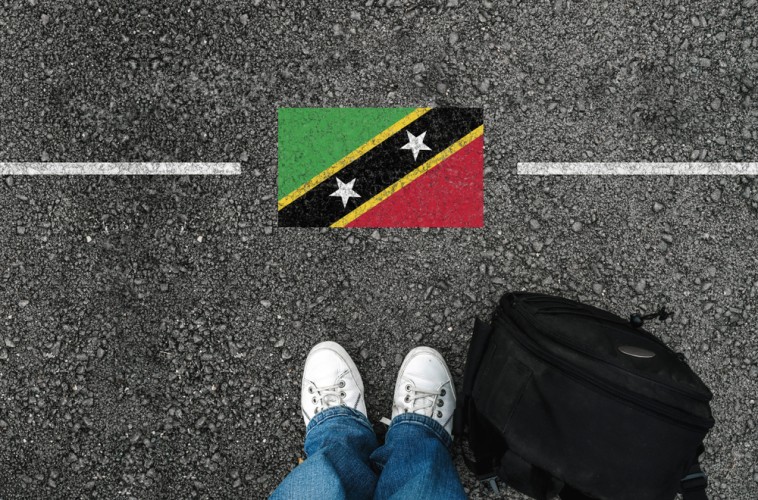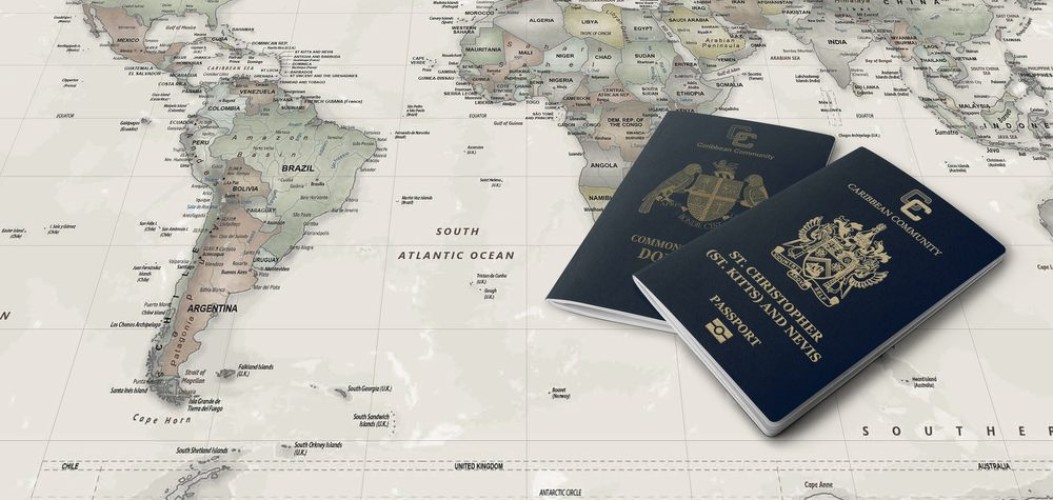Antigua and Barbuda is an autonomous nation in the eastern Caribbean Sea that is well-known for its immaculate beaches, fascinating history, and lively culture. Although not a republic, its traditions still echo an imperial past where history and modernity meet—much like a parrot brightly showcasing its colors. It is a captivating location because of its distinctive fusion of historical significance and natural beauty. This island nation proudly flies its flag, a vibrant emblem of its identity, and its language reflects a rich tapestry of influences. In this article, we’ll tell you everything you need to know about what is Antigua and Barbuda and how it stands out from other Caribbean countries.
Geography and Location
If you’re wondering where is Antigua and Barbuda located, then this section will tell you everything you need to know. The eastern Caribbean’s Antigua and Barbuda is situated in the Leeward Islands of the Lesser Antilles. Antigua, the largest island, is around 280 square kilometers in area, whereas Barbuda, which lies 40 kilometers north, is about 160 square kilometers and serves as the northernmost inhabited point of the country. Smaller islands are also part of this nation, united under the same flag and within its national border. Montserrat is a neighboring country to the southwest, and Saint Kitts and Nevis is near it to the northwest.
Further south, you’ll find Martinique, and to the north, other Windward Islands stretch across the Caribbean, each with its own distinct culture, language, and flag. Redonda, a lesser-known island near to the west, adds to the region’s diversity, though it’s not as prominent as these neighboring countries. The border with these countries highlights the place of Antigua and Barbuda in this tropical archipelago.
Antigua’s geography is primarily flat, with Boggy Peak, its highest peak, rising to a height of 402 meters. In contrast, Barbuda, a flatter island located to the north of Antigua is noted for its famed shoreline and enormous coral reefs.
History
The history of Antigua and Barbuda dates back thousands of years. The rich heritage of the island unfolds through these key events:
- 2900 BC: Siboney people first inhabit the islands.
- 35 AD: Arawaks introduce agriculture.
- 1493: Christopher Columbus sights Antigua, naming it after a Spanish chapel.
- 1632: British colonization begins in Antigua.
- 1678: British expand to Barbuda.
- 1834: Emancipation ends slavery, shifting the economy.
- 1981: island Antigua and Barbuda gains independence within the Commonwealth.
The islands’ history is defined by the resilience and the salvations of a proud people who, even under colonial rule, nurtured their identity, often raising the flag as a symbol of unity.
Demographics
Antigua and Barbuda is home to a diverse population with a rich cultural heritage. The following table outlines key demographic details.
| Category | Details |
| Population | Approximately 98,000 |
| Geographic Distribution | The majority live in Antigua, especially in and around the capital; smaller community in Barbuda, mainly in Codrington |
| Ethnic Composition | 87% of the population is of African ethnic origin, a legacy of the slave trade; 4% is of mixed background; 2% is European, primarily British; and the remaining 4% is of East Indian and Middle Eastern ancestry |
| Religion | The predominant religion is Christianity, with Anglicanism at the top, followed by Catholicism and other Protestant groups—many bearing a cross as a symbol of their faith |
| Literacy Rate | Over 90% of locals are literate because education is compulsory until the age of 16, reflecting the meaning of progress in this Commonwealth nation |
Culture and Language of Antigua and Barbuda
A lively fusion of African ancestry, British colonial influence, and the exuberant spirit of the Caribbean makes up Antigua and Barbuda’s cultural fabric. Wondering whats the essence of this culture is? Its key characteristics are outlined below:
- Music: Calypso, soca, and reggae set the soundtrack, especially during Carnival.
- Festivals: Late-summer carnivals feature parades and costumes.
- Cuisine: Signature dishes include ducana, pepperpot stew, and fungee.
- Sports: Cricket, a British legacy, unites communities.
So what language is spoken in Antigua and Barbuda? In government, business, and education, English is the official language. However, in everyday conversation on this island, the local Creole dialect is widely spoken, blending elements of English with African linguistic influences. It is a language that bears the meanings of its diverse heritage.
Local artist Sylvanie Abbott is a notable figure in Antigua’s creative scene. Sylvanie exemplifies this cultural blend by using her talents to promote environmental awareness. These efforts reflect the nation’s deep connection to its natural surroundings.
Government
Antigua and Barbuda operates as a parliamentary democracy under a constitutional monarchy within the Commonwealth. In his role as head of state, the British king, currently King Charles III, is represented by a governor-general, rather than a president as in many other countries.
The Eastern Caribbean Supreme Court serves as the judiciary’s fulcrum and is autonomous. With no president but a strong legislative system, the Commonwealth of Antigua and Barbuda has combined local administration with its British heritage since gaining independence in 1981.
National Symbols
The flag of Antigua and Barbuda, adopted in 1967, features a red field with an inverted triangle split into black, blue, and white stripes, topped by a yellow sun. Red signifies the people’s vitality, black their African roots, blue the hope and sea, white the beaches, and the sun a new era. Each color carries a deep meaning. The flag flies high over the capital, St. John’s, as a testament to this country’s spirit.
The coat of arms features a sugar mill with an homage to the past, backed by dolphins and flanked by the national animal, the deer. On top of it is a floral garland and a helmet.
Additional emblems that hold significance for the identity of the country are the frigate bird, the dagger log flower, and the anthem “Fair Antigua, We Salute Thee” all tied to the colors of the flag.
Capital and Major Cities
What is the capital of Antigua and Barbuda? Wheres this vibrant hub located, and whats its role?
St. John’s, on Antigua’s northwest coast, holds that title, housing about 22,000 people. The capital of Antigua and Barbuda thrives as a gateway for trade and tourism, its harbor alive with activity, often adorned with the national flag. This bustling port city blends colorful colonial buildings with landmarks like St. John’s Cathedral. It serves as the political heart of the commonwealth Antigua and Barbuda.
Additional significant towns on Antigua, such as All Saints and Liberta, complement its landscape, while Codrington serves as the main settlement for Barbuda’s smaller population. Roseau, a well-known name in the Caribbean, is located to the west in countries bordering Antigua, rather than within the islands of Antigua and Barbuda themselves.
Economy
The economy of Antigua and Barbuda Commonwealth hinges on a mix of industries beyond its well-known visitor appeal.
Cotton, sugarcane, and fruits—including green varieties—are produced by agriculture, which also has a big impact, whereas textiles and rum are produced by light industries.Diversification efforts focus on technology and financial services; however, hurricanes remain a threat on the island, as they can damage infrastructure and disrupt revenue, a challenge faced by neighboring countries as well. The country of Antigua and Barbuda balances these challenges with its natural appeal, striving for sustainable growth.The country has also been investigating prospects in offshore banking and international business in addition to these main sectors in an effort to draw in foreign investment and strengthen economic resilience.
Travel and Tourism
The twin-island nation of Antigua and Barbuda attracts travelers with the enticing promise of 365 beaches, one for each day of the year.
Each beach has its own unique style. Dickenson Bay buzzes with the thrill of water sports, like jet skis slicing through the surf, whereas Half Moon Bay invites visitors with its tranquil, crystal-clear waters ideal for a peaceful swim. Then there’s Barbuda’s Pink Sand Beach, a stunning expanse of shoreline that captivates with its unique rosy hue.
Antigua Sailing Week, a globally recognized event, attracts sailing aficionados from across the globe to test their skills in the trade winds, cementing the islands’ status as a haven for mariners, with the flag displayed on vessels.
Antigua and Barbuda Citizenship by Investment
Introduced in 2013, the Antigua and Barbuda Citizenship by Investment Program grants citizenship to investors through a range of investment choices. Below is an overview of the available pathways:
| Option | Minimum Investment | Description |
| Real Estate Purchase | $400,000 | Investment in approved properties |
| National Development Fund | $230,000 | Donation to national development |
| Business Investment | Varies | Job-creating business venture |
Among the many advantages of this program are visa-free travel to more than 150 nations, including the UK and the Schengen Area—countries bordering the Atlantic, and a simple three- to four-month application process.
Additionally, the program offers a lifetime citizenship opportunity with no residency requirements, making it an attractive choice for investors seeking flexibility and global mobility. Antigua and Barbuda’s stable economy, picturesque landscapes, and welcoming culture further enhance the appeal of this citizenship route.
Top Destinations in Antigua and Barbuda
Antigua and Barbuda is a beautiful Caribbean country with two islands full of fun and history. It has cool old places and amazing nature spots. Whether you like beaches or exploring, here are the places you should visit.
Nelson’s Dockyard: Sailing Into the Past
Nelson’s Dockyard, one of the most historically significant locations in the Caribbean, is located in English Harbour on Antigua’s southern coast. Named after a British naval officer Horatio Nelson, who was stationed there in the 1780s, this naval base dates back to the 18th century and was once at the centre of Britain’s maritime operations in the area.
Today, it is a UNESCO World Heritage Site in addition to being a National Park. The dockyard has been restored to become a living museum that combines Georgian architecture with contemporary interest.
Admiral’s House and the Dockyard Museum have historic tools, old ship models, and naval charts that allude to the harbor’s strategic significance—some even preserved as if etched onto a historical disk of time.
Antigua still has a maritime flair, as evidenced by the opulent vessels that come and go from the harbor and the annual Antigua Sailing Week, which attracts fishermen from all over the world, often flying the flag. Its cobbled streets, sea wind, and architectural relics make it stand out even among Caribbean attractions.
Frigate Bird Sanctuary: Barbuda’s Best-Kept Secret
Frigate Bird Sanctuary is one of the most exciting places on the island. Wheres this natural wonder? A unique bird sanctuary that rivals any in the Western Hemisphere can be found on the more sedate island of Barbuda. The fact that it can only be reached by boat gives the trip an air of adventure. You’re in for a great show if you visit the country between late fall and early spring. In an attempt to impress prospective mates with a show that is both magnificent and strange, male frigate birds puff out their bright crimson throat pouches.
The sanctuary is home to more than 5,000 of these animals, which fill the sky with their long wings and distinct silhouettes. This natural spectacle bears witness to Barbuda’s untouched wilderness, drawing nature enthusiasts from around the world. Local guides often share tales of the island’s ecosystem, emphasizing how the sanctuary thrives as a delicate balance of life amidst the mangroves, with its beauty reflected in the meanings of the national flag. Alongside frigates, you’ll likely spot herons, pelicans, and other birds nesting in the mangrove tangle. It’s one of those places that’s hard to describe unless you’ve been there—wild, serene, and completely unique to Barbuda.
Dickenson Bay: Beach Vibes All Day Long
Just a short drive from the capital St. John’s, Dickenson Bay is where the island of Antigua and Barbuda shows off its more playful side. This beach is a classic Caribbean postcard—soft white sand, calm turquoise water, and palms swaying like they were made for vacation ads. Whether you’re into relaxing with a cold drink or itching for something more active, this beach ticks all the boxes. The water’s great for swimming and snorkeling, and you won’t have to search hard for paddleboards, jet skis, or parasailing operators.
Behind the beach, a line of bars and restaurants keeps things lively. Grab some local fish or try the conch fritters if you’re feeling adventurous. The whole stretch feels friendly and welcoming without trying too hard—no wonder it’s one of the most visited beaches on the island.
Both a love for the present and a profound regard for the past are evident in its serene beaches, such as those at Pink Sand Beach, and historic locations, like Nelson’s Dockyard encircled by its rich maritime heritage.
Antigua and Barbuda is a living example of the strength of community, history, and the beauty of nature, raising its flag to the west of many Atlantic countries, and inviting everyone to discover its timeless charm.


